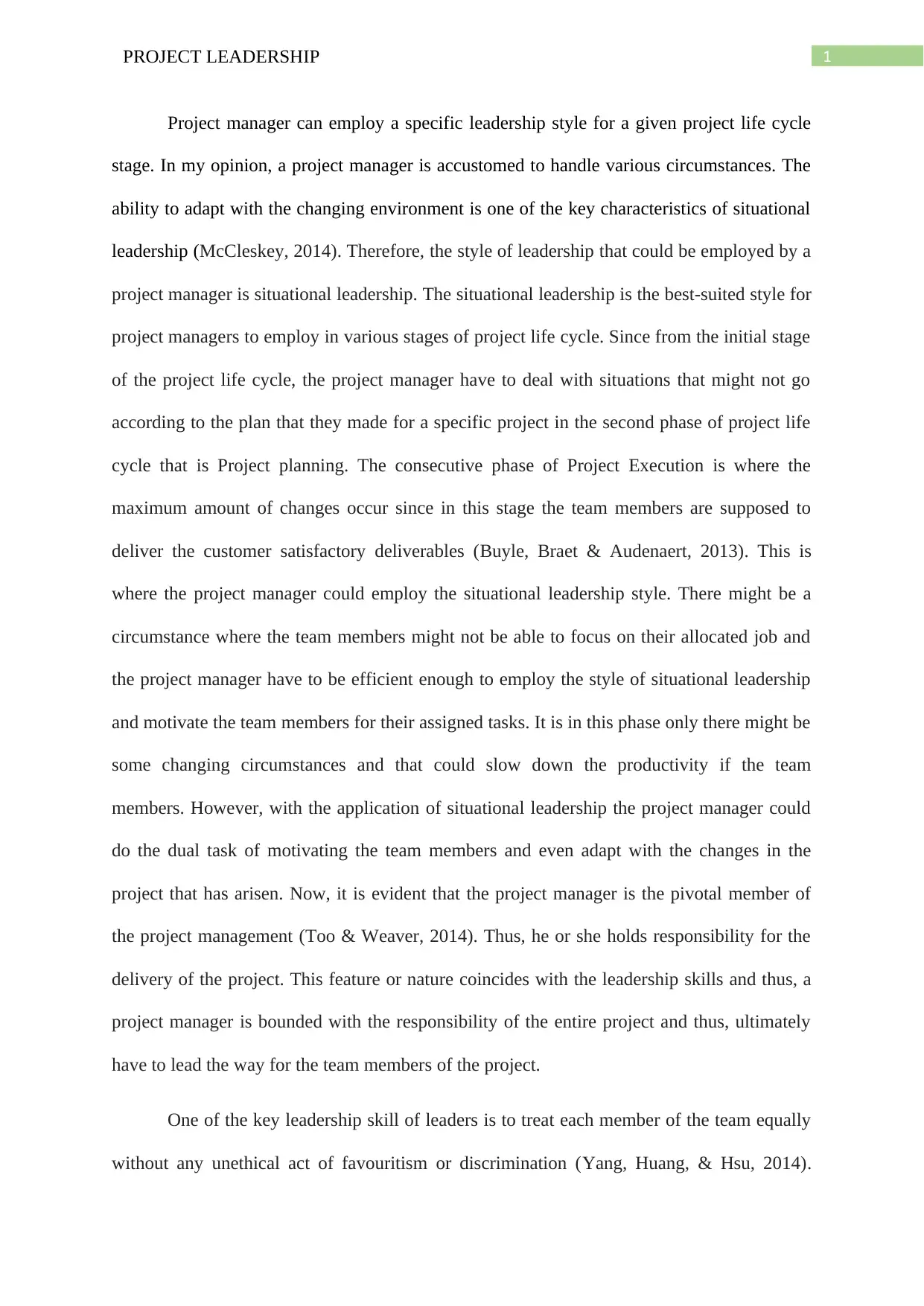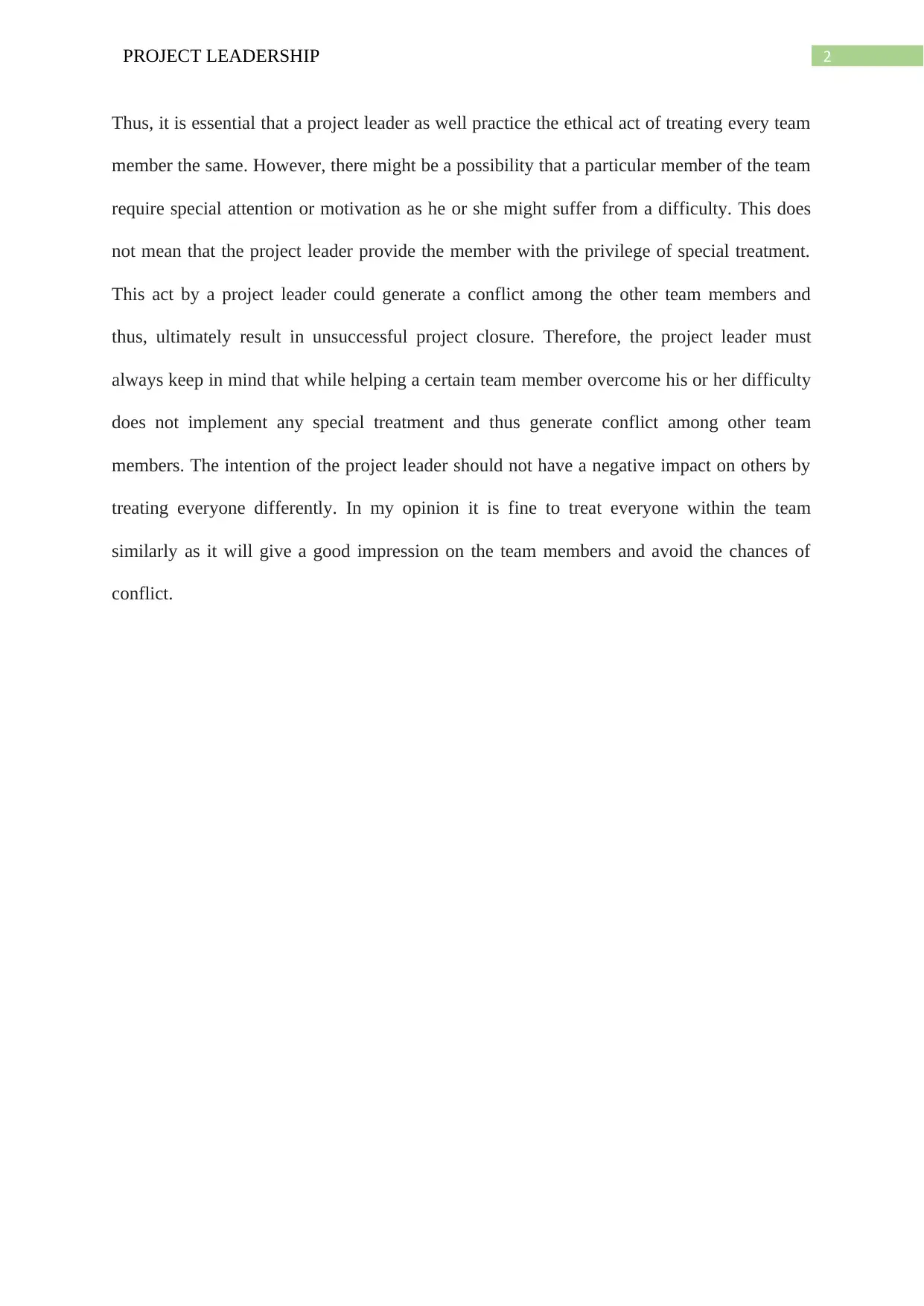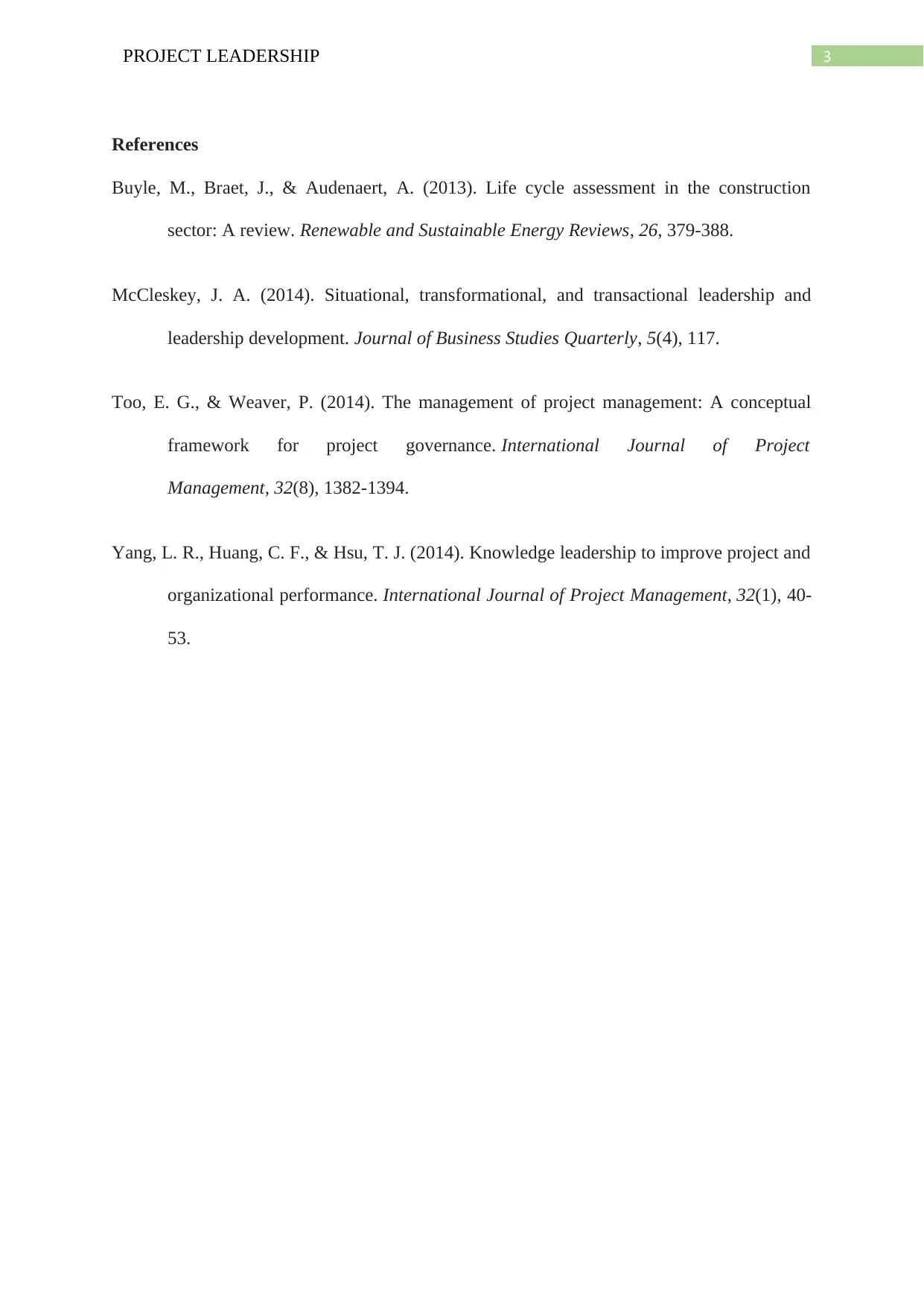Project Leadership: Reflective Journal - MGT5PLS Course Analysis
VerifiedAdded on 2023/06/10
|4
|774
|102
Journal and Reflective Writing
AI Summary
This reflective journal explores project leadership, examining the application of situational leadership within different project life cycle stages. The author argues that project managers should adapt their leadership style based on the project's needs, particularly during the planning and execution phases. The journal discusses the importance of treating team members equitably, emphasizing that while individual support is necessary, it should not create conflict or perceived favoritism. The author reflects on ethical considerations in project leadership, highlighting the need for leaders to foster a positive and inclusive team environment. The paper references several academic sources to support the arguments made about effective project leadership.
1 out of 4









![[object Object]](/_next/static/media/star-bottom.7253800d.svg)